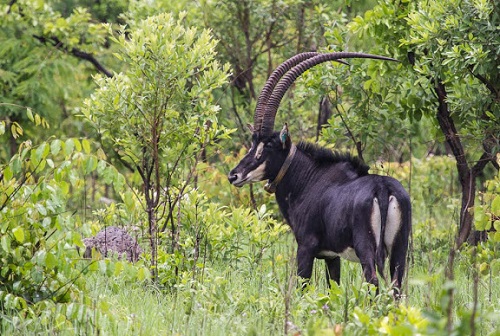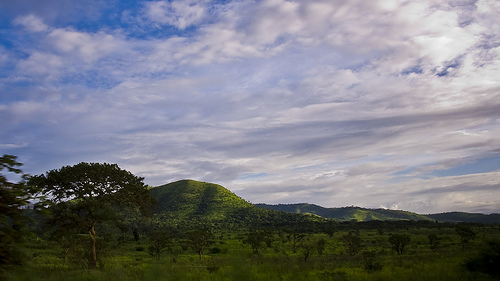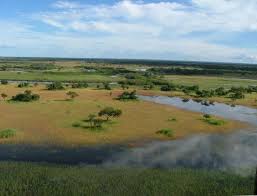Malange
- Feb 26, 2018
- 3 min read
Updated: Apr 8, 2018
A city in a the north western part of Angola, around a 5 hour journey by car from Luanda. In the vicinity of Malange you can find the Black Stones of Pungo Andongo as well as the XVII century Portuguese fort; not forgetting the Kalandula Falls which are definitely worth a trip. Finally you can find the symbol of Angola: the Palanca Negra, an antelope unique to Angola, native to the province.
Pungo Andongo rocks

An ancient rock formation that is associated with a number of tribal legends and animal shapes. The rocks can be spotted on your way into Malange, and they are located in a small village, Pungo Andongo, which is 116km from the city.
In bygone times it was known as Queen Njinga's natural fortress; a protective barrier of the Kingdom of the Ndongos. This formidable natural structure has one entrance and one entrance only and is surrounded by the enormous rocks of the river Kwanza - a hazardous and dangerous river to cross - making it an impregnable obstacle for attackers. Needing a mere half a dozen soldiers to protect the occupants, it soon became the ideal location for the Queen and her devotees to rest. Therefore the legend says that the footprints embedded in the rock belong to Queen Njinga, her dog and children.
Geologically, the rocks are a mystery: they are hard sedimentary conglomerates but are out of character with the surrounding topography. The growth of mosses and algae causes them to change color during the seasons. During those seasons people believe Queen Njinga's spirit is back in her safe place as those were the color of the costumes she mostly used. Impressively some state that when camping noises can be heard of people singing and children playing.
Nearby you can also find a Portuguese fort and the Kalandula Falls which are definitely worth a trip.
Kalandula Falls

Kalandula Falls, located in the province of Malanje. The Falls have formed on Lucala river, the largest tributary of Kwanza river. They are about 80 km from the provincial capital Malanje and 420 km from Luanda. With a width of 410 meters and a height of 105, they are like second largest of Africa. Until 1975 (without colonial time) they were known by the name of Falls of the Duke of Bragança.
The stream of the waterfalls is divided into smaller drips through crevices and stones at the edge of falls. As a result Kalandula Falls have their own, very special beauty, as they differ from any other large waterfall around the world. The stream is eroding the cliff, large boulders and smaller rubble often fall down together with water.
The eternal vapour of falls has sustained a small oasis of rainforest around the river. In the rainy period (February to April) this waterfall is especially impressive - then the stream becomes powerful creating falls up to 580 m wide. The haze of the falls is seen from afar.
Although Kalandula Falls are one of the most spectacular falls in the world, here you will find no ticket offices, railings, souvenirs or hordes of tourists, making an ideal stop off during your visit to the province
Rapids of River Kwanza
The rapids are a few Km after the town of Cangandala.The Kwanza is a big river, with a huge flow, thus the final drop of 5 or 6 meters of the rapids make a powerful waterfall. It’s is trully impressive. You can also swim in the flat water above and below the fall.
For adventure seekers I found this unbelievable kayaking video in the upper Kwanza river:
(video)
The Kangandala National Park
A natural reserve in the province of Malange, home of Black Giant sable Antelope none as Palanca Negra. This established as a full nature reserve in 1963 and raised to National Park in 1970, it is rich in bird species, such as wild ducks, bonnets, partridges, pigeons, among others and it protects the Palanca Negra, a unique species to Angola.










Comments